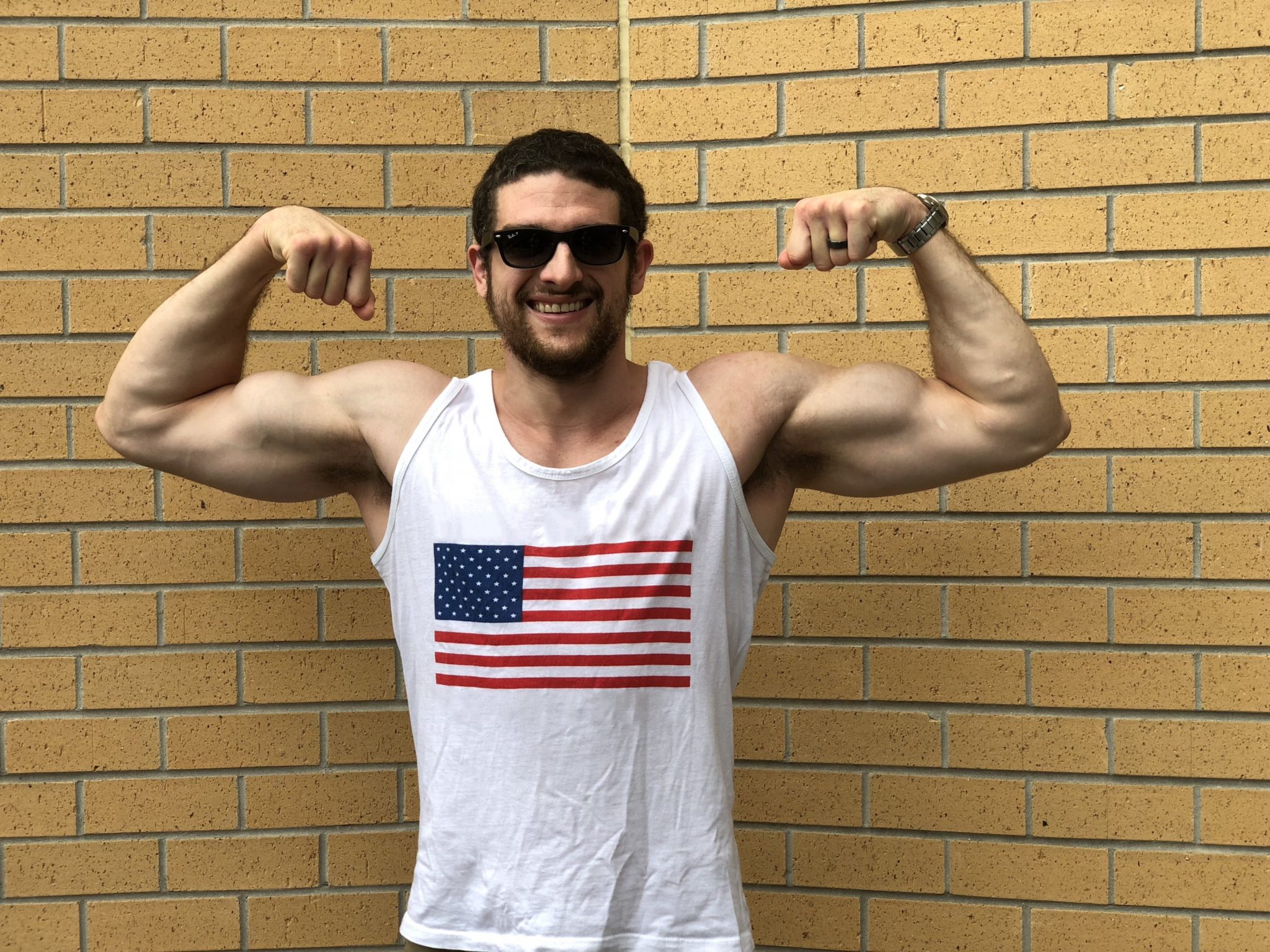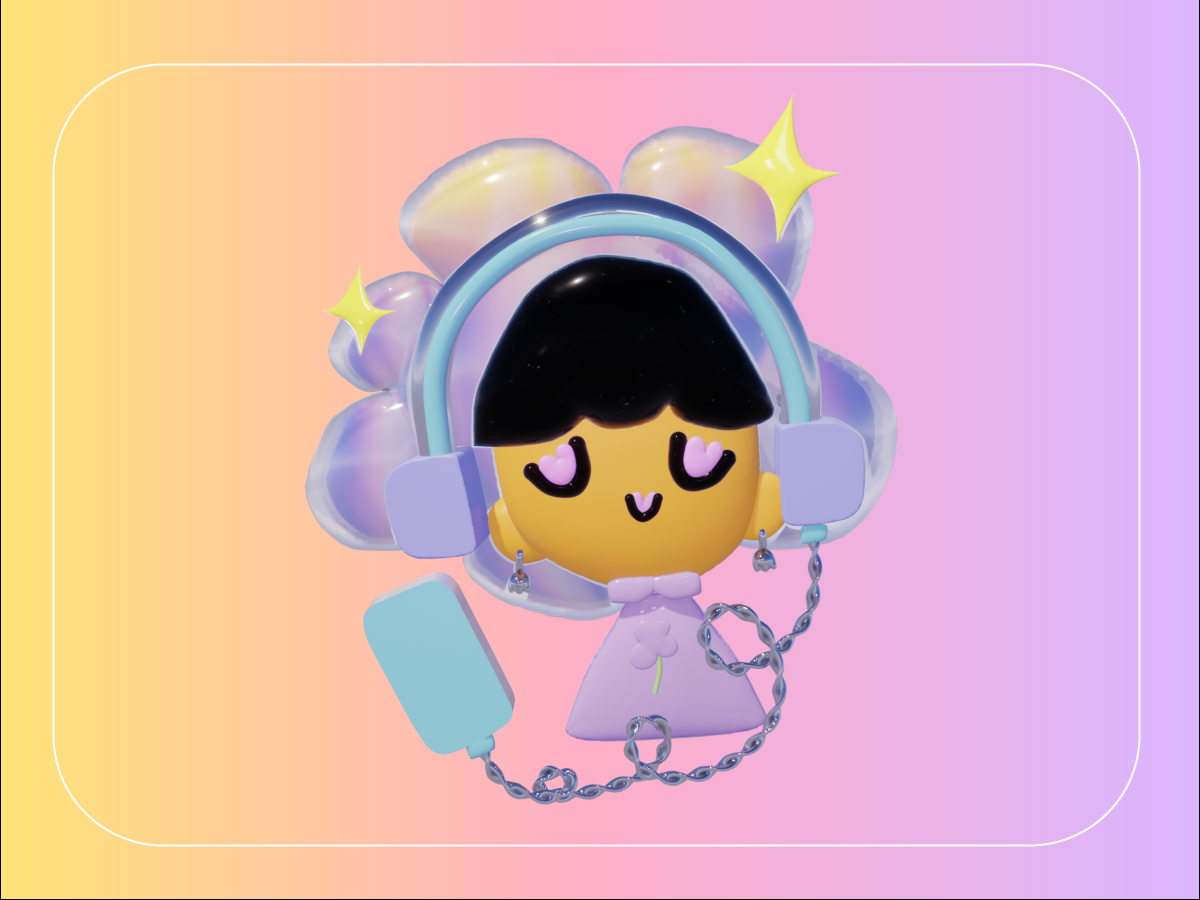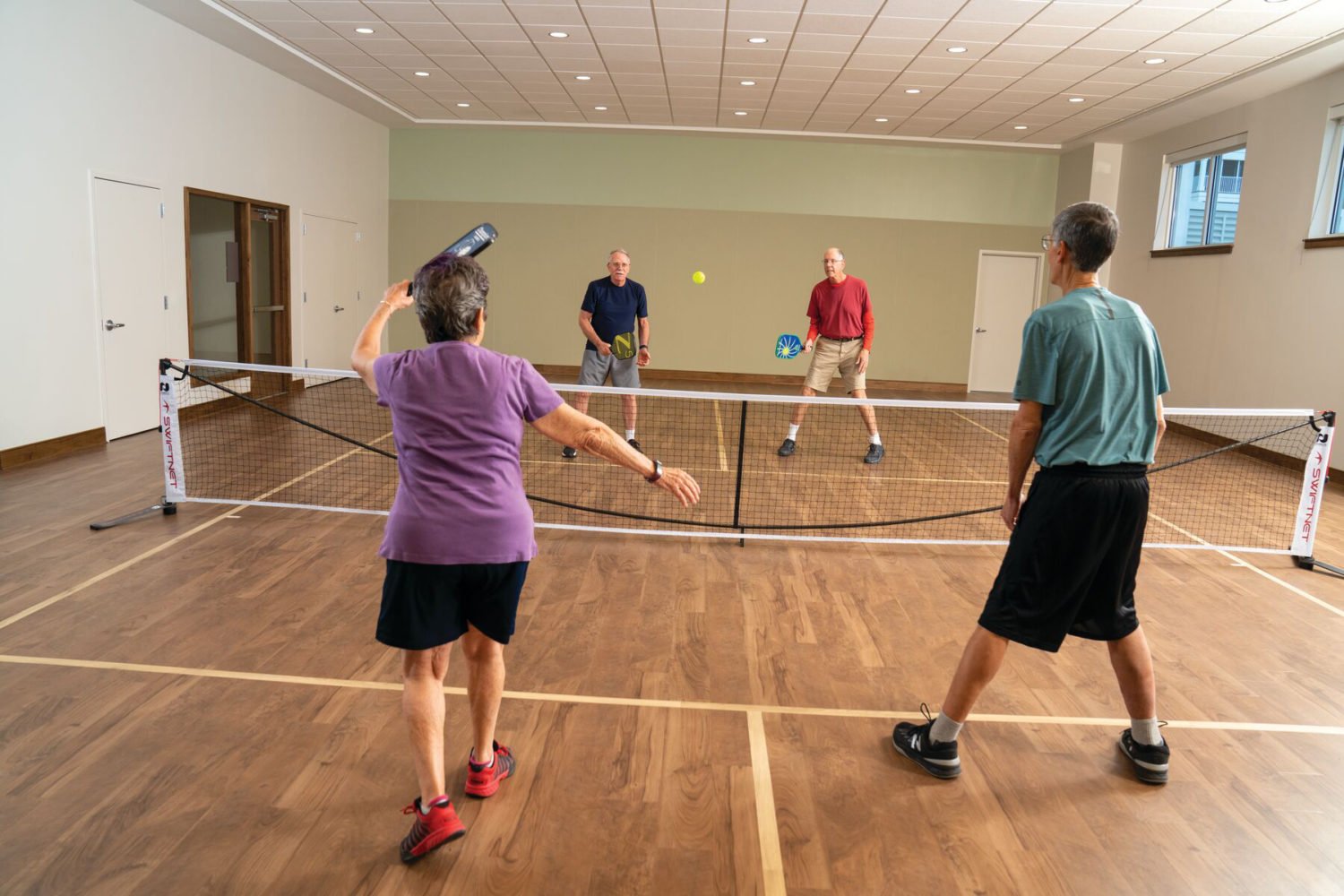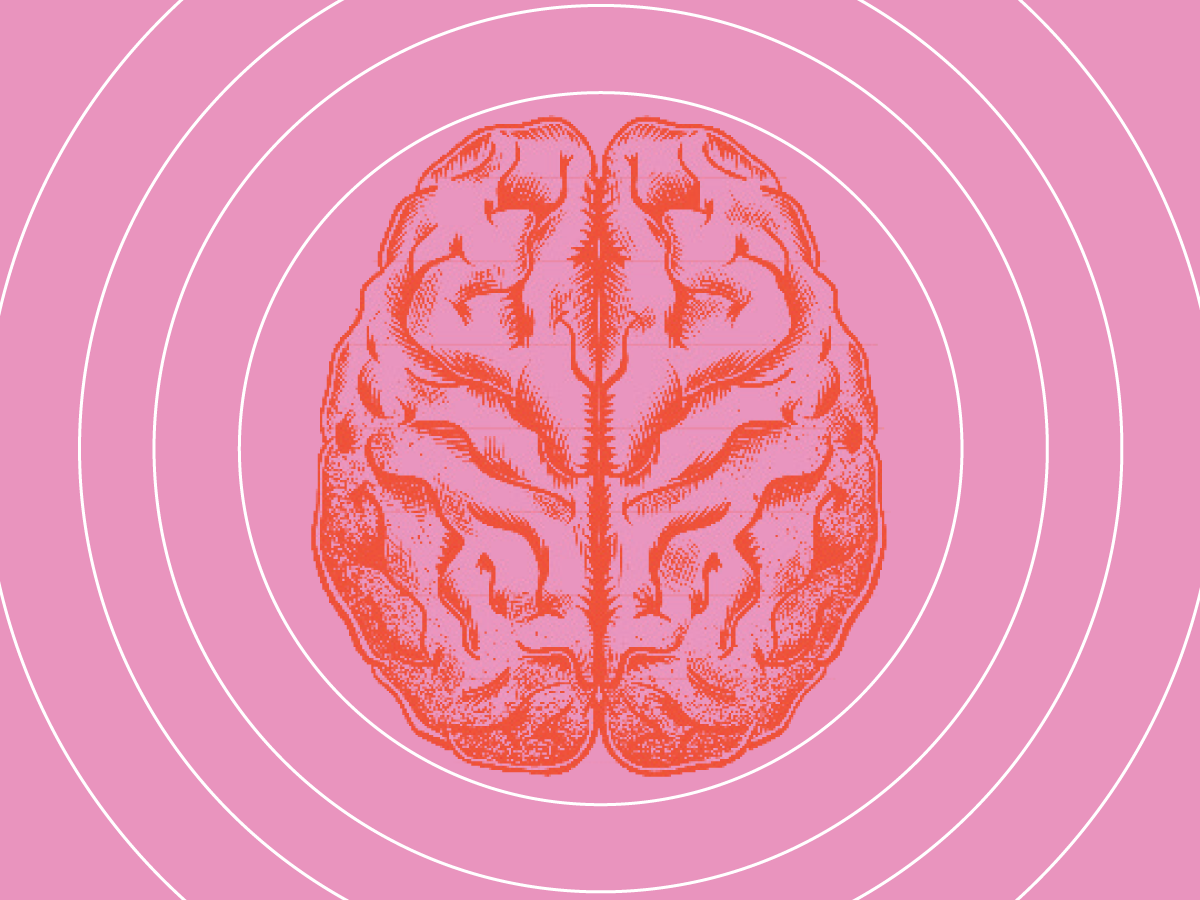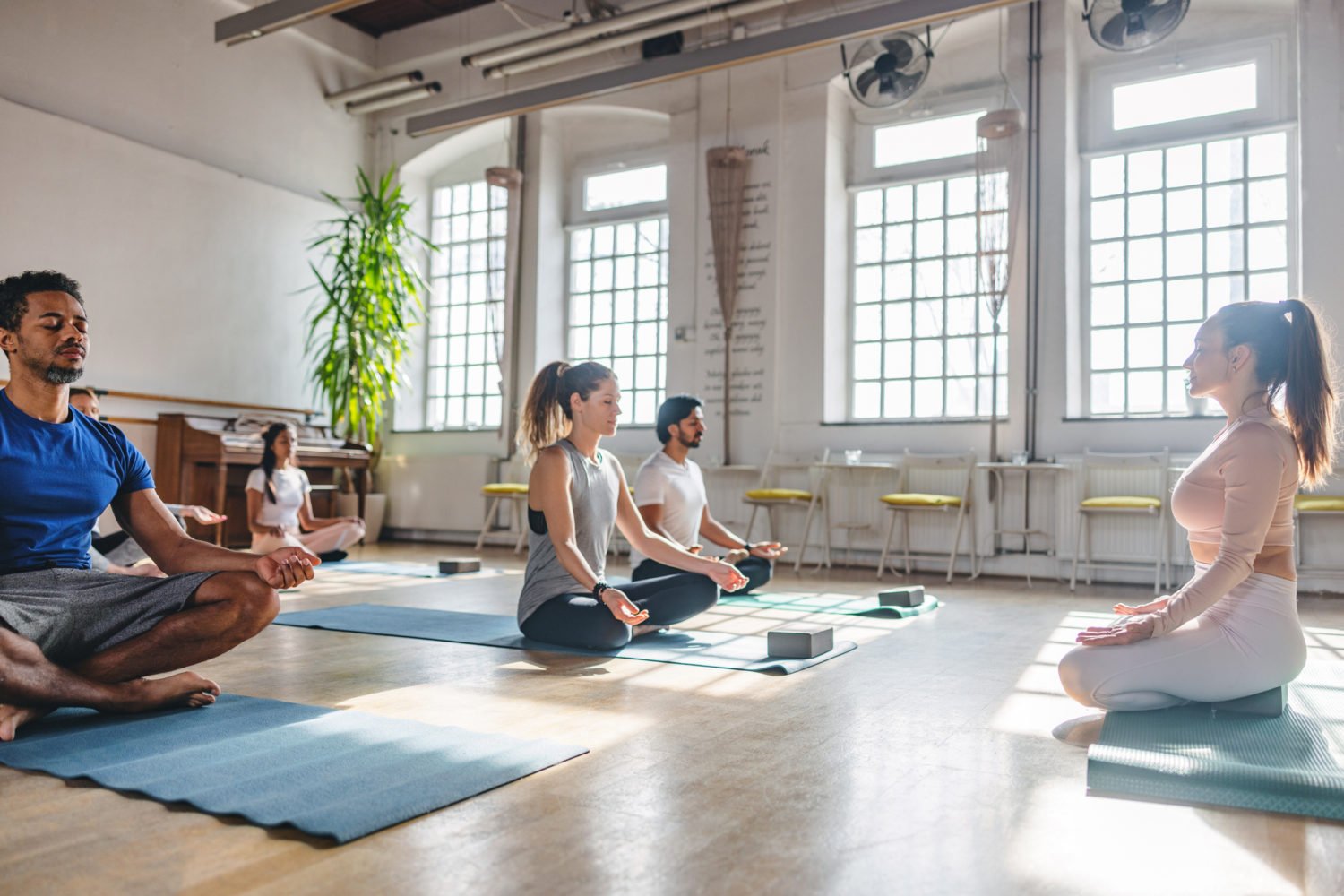Who: Anthony DiFrancesco, 27, senior developer and cloud architect for a software startup
Lives: DC
Height: 6’3″
Start weight: 205 lbs
Current weight: 188 lbs
How long it took: 2.5 years
Turning point: Around two-and-a-half years ago, my now-wife and I went on a trip to Costa Rica with her family. When I got back and looked at pictures of myself, it really hit me that I was no longer that guy who could eat whatever he wanted and not gain any weight. In my teens and early twenties I was pretty active, played sports, and never had to pay much attention to what I ate. Somewhere along the line I stopped being as active and everything started catching up with me. I started hitting the gym that week and haven’t stopped since.
Exercise: I do a “push, pull, legs” style workout six days per week starting with push on Monday. I typically rest on Sundays, and also in the middle of the week if something comes up. I also take walks a few nights a week with my wife for cardiovascular health in general. Typical gym sessions are 45-60 minutes—here’s a sample workout:
- Push: Incline or flat bench (3×8, or three sets of eight reps), shoulder press (3×8), chest flies (3×12), lateral raises (3×12), tricep extensions (3×12), tricep pull downs or dips (3×12)
- Pull: Seated rows (3×8), weighted pull ups (3×8), single arm rows (3×12), face pulls (3×12), barbell curls (3×8), hammer curls (3×12)
- Legs: Squats or leg press (3×8), straight leg deadlifts (3×8), leg extensions (3×12), leg curls (3×12), calf raises (3×12), some sort of abs (switched up frequently)
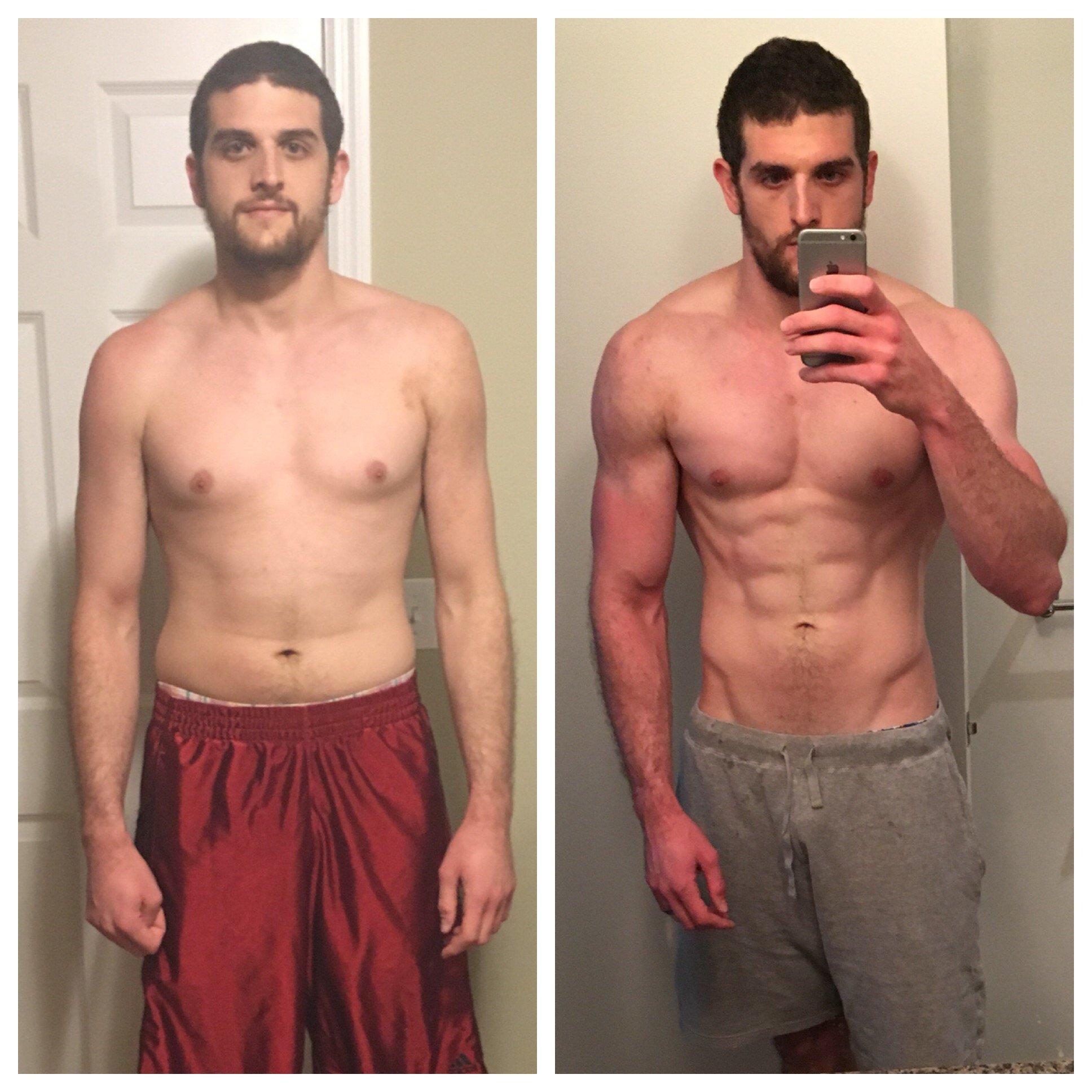
Diet: I followed intermittent fasting and If It Fits Your Macros (IIFYM). For me, intermittent fasting basically means skipping breakfast. And IIFYM means I eat whatever I like as long as it fits my macronutrient goals, although I try to eat clean 80 percent of the time and treat myself 20 percent of the time with sweets or really fatty foods. You have to make sure to get enough micronutrients, though, as they can be easy to overlook sometimes, so I make sure to eat veggies and take a multivitamin.
I use MyFitnessPal to track everything I eat. My total daily energy expenditure, or calories used per day, is somewhere around 2,800. I eat about one gram per pound of body weight for protein, around .4 grams per pound for fat, and the rest are carbs. I didn’t really cut out anything completely, although I do drink water almost exclusively now. I’ll drink Gatorade after a workout sometimes and still have a few beers some days, but I gave up soda for the most part. I eat a lot of chicken, but am not a fan of just baked chicken, rice, and veggies, so I try to mix it up and make different things.
Diet go-tos: Chicken tacos, chicken stir-fry, cauliflower-crust pizza, pasta, chicken chili, prepackaged pastas and Indian food from Trader Joe’s, lunch meat wraps on lavash (a high-fiber wrap)
Fave splurge: Living in DC, it’s hard to pick just one, but one of my go-to cheat meals is probably a burger and fries with a nice cold beer.
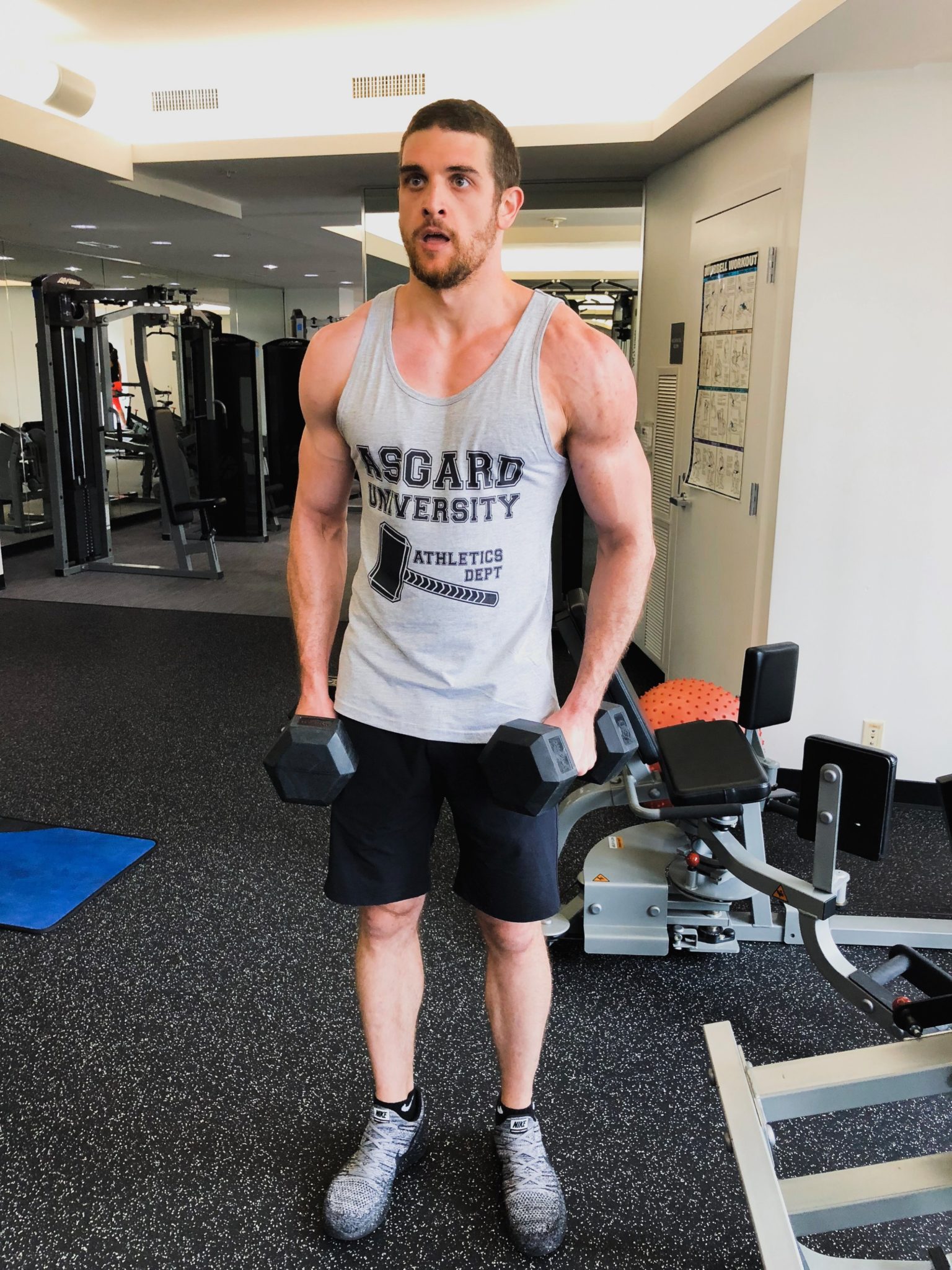
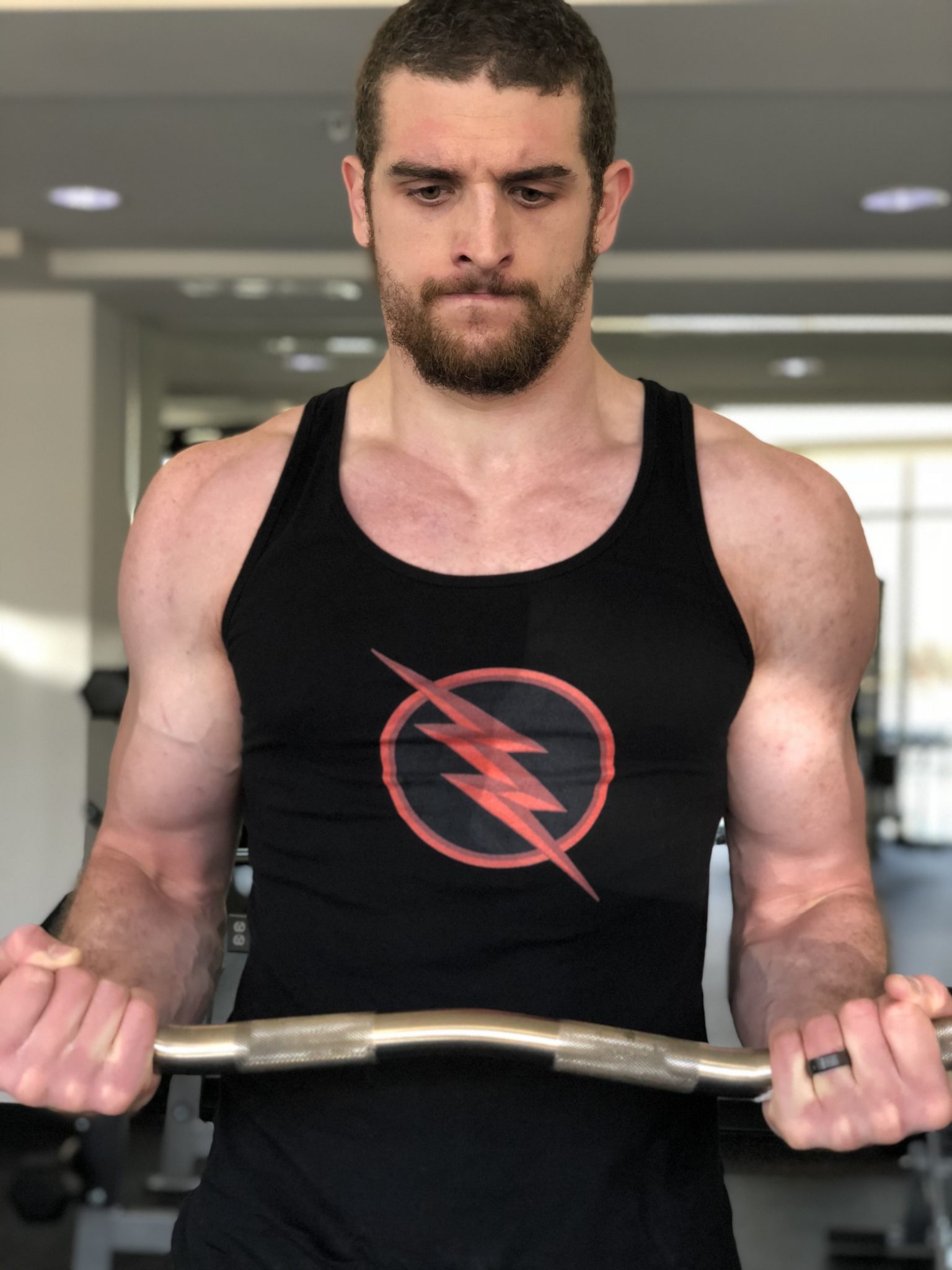
How he stuck to his goals: Some people are naturally self-motivated and others aren’t. You have to find what works for you, and it can be hard to learn what that is. For me, I really motivated myself by focusing on specific goals and making it a game against myself. Before I knew it, I was actually enjoying my time at the gym and looking forward to lifting weights every day to see if I could “beat my score” from the past week.
I find it helpful to have someone to lift with. My wife and I do a great job of keeping each other on track and doing thing like pushing the other to go to the gym when feeling lazy. It’s nice to have someone else to help motivate you when you may not always have the motivation yourself.
Take tons of measurements and progress pics. It’s the only way to know for sure how you are progressing, and it may seem tedious, but you’ll be thankful for that info when you want to reflect back and see how far you’ve come. If you’re a nerd like me, put it all in Excel and make lots of charts.
I think “everything in moderation” is key, and being able to enjoy foods I really liked to eat definitely helped keep my sanity when eating lower calorie meals. Eating a lot of protein helps, too, since it’s really satiating.
How he feels now: I definitely just feel better about myself and it helps boost confidence. I’m happier and feel more fulfilled. I’m much healthier and don’t get winded by simply going up a few flights of stairs. I feel more motivated to do other things that aren’t related to fitness or dieting, and I don’t feel lethargic like I used to. I dress better and feel like I have a reason to dress well. Plus, lifting is a great stress reliever for me and really gets me going in the morning.
Newfound body love: I definitely like challenging myself to see what kinds of things I’m able to do now. I can do 30 pull-ups and had previously never done more than a few. I’m getting back into sports and feel like I’m performing like I used to in high school—I can play a whole game of flag football without feeling like I’m going to pass out.
Workout wisdom: It’s never too late to start and it doesn’t have to be as difficult as it’s made out to be. Small changes can make a big difference over time. The hardest part is getting started, and once you get going, it becomes easier to stick with it.
This interview has been edited and condensed.
Want to be featured in How I Got This Body? Whether you lost weight or gained it, got toned or put on some serious muscle, I want to hear from you! Email me at kolsen@washingtonian.com.

